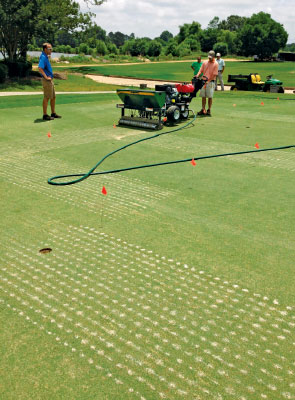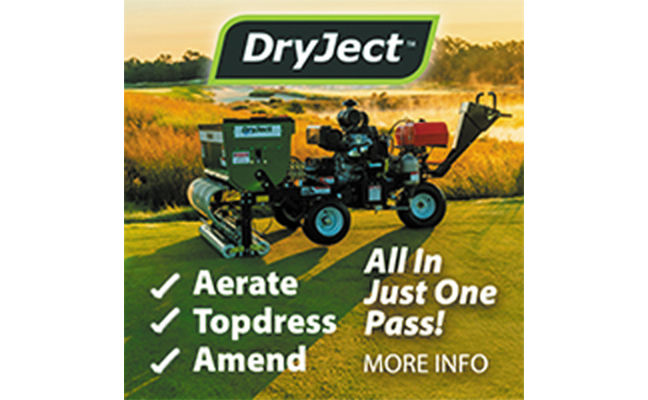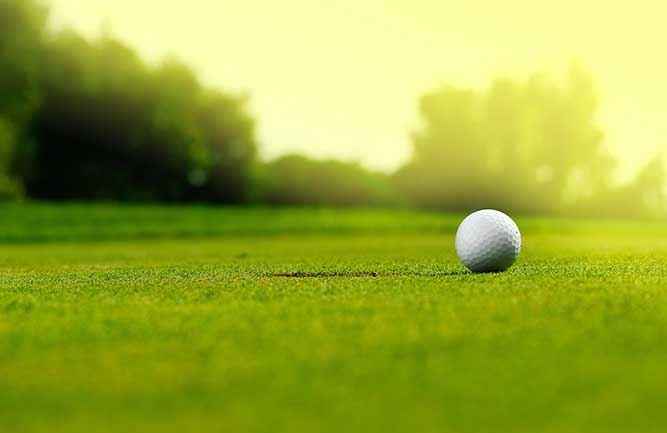An alternative approach to aerification

Mississippi State golf course practice putting green following June 2014 DryJect treatments. Photo by: Jordan Craft
Turfgrass managers are challenged with determining the right combination of aerification practices throughout the growing season. Soil physical properties change over time due to routine traffic and organic matter accumulation from roots and clippings, as well as natural soil aging.
The best indication of poor soil properties is the dreaded “organic layer.” Organic matter concentrations of 4 percent to 5 percent will decrease water infiltration and air movement into the root zone, resulting in excess moisture when it’s wet and exaggerated desiccation when it’s dry.
Ongoing research at Mississippi State University (MSU) seeks to minimize disruption due to traditional aerification technologies using high-pressure, water-based injection that simultaneously fills holes with kiln-dried sand (DryJect).
Our objective is to evaluate this technology against traditional aerification techniques. Research seeks to optimize the combination of the new technology with a modified traditional aerification program to achieve minimal surface disruption without compromising soil physical properties and playability.
Treatments compare effects of different combinations of 0.50- and 0.25-inch diameter hollow-tine aerification to DryJect from June to August. The DryJect treatments are performed with a DryJect 4800, with nozzles spaced at 3 inches by 3 inches and at a depth of 5 inches, and a DryJect 4800 Maximus with nozzle spacing at 6 inches by 5 inches and at depths of 5 and 10 inches. Hollow-tine aerification treatments, 0.25- and 0.5-inch diameter and 0.5-inch diameter, are applied with 1-inch by 1-inch spacing at a 2-inch depth. Data being collected includes surface firmness, hydraulic conductivity, bulk density, chlorophyll index, normalized difference vegetative index and thatch depth.
Superintendents will be able to use the results of this research to develop aerification strategies that control organic matter accumulation while minimizing surface disruption.










